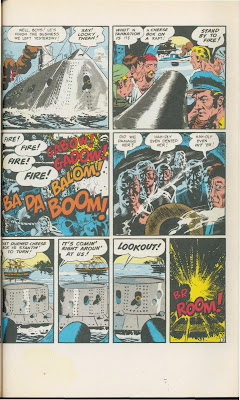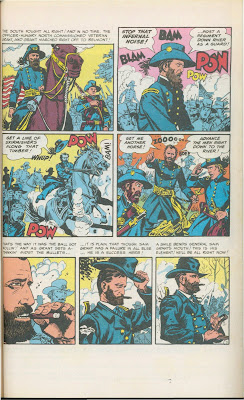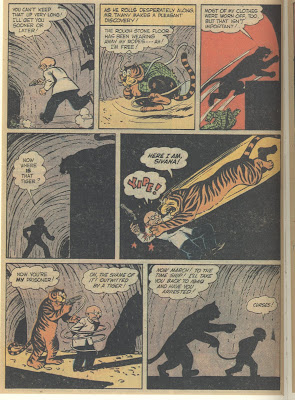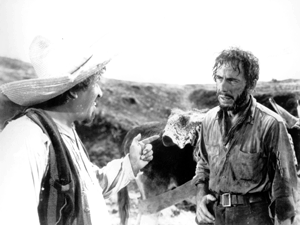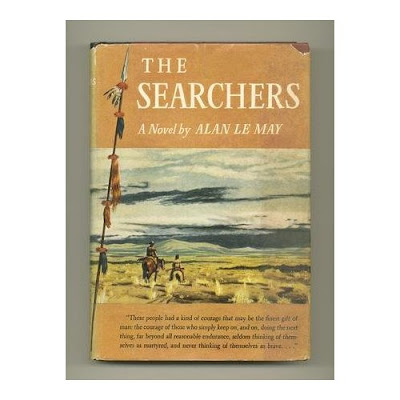 The Searchers
The Searchers, by Alan Le May, was published in 1954 and adapted into one of the best Westerns ever made by John Ford and John Wayne in 1956. In fact,
The Searchers is one of the best
movies ever made--period.
But you know how in most cases, the original book turns out to be better than even a well-made movie adaptation? This is the case with
The Searchers. Le May's novel has great characters, a tense and fascinating plot, and some of the most vivid descriptions of the terrain and weather of the American Southwest ever put on paper.
The description of a snow storm that traps the main characters, for instance, will have you shivering in sympathy even if you're reading it on the beach in 90 degree weather. The description of riding through the heat of a Texas desert will, on the other hand, have you dripping in sweat even if you're sitting in an igloo while reading it. Le May's prose perfectly brings across just how hot or cold or exhausted his characters are at any one time. (And, by golly, they pretty much
always seem to be hot or cold or exhausted.)
As for the plot--well, it should be unnecessary to recount it, since anyone who hasn't at least seen the movie really should be taken outside and shot. It involves the kidnapping of a young girl by Comanches. Two men, Amos Edwards and Marty Pawley, begin a search to find her. Five years later, both men are still looking--determined to never give up.
But their motivations are very, very different. Amos intends to kill the girl (his niece), because he knows by this time she will be more Indian than white. Marty, though, still wants to save her.
The novel plays off this tension, coming up with a bit of biting irony at the climax (that is very different--in one key way--than the ending of the movie) that brings everything to an emotionally satisfying conclusion.
Just as the movie is a great film (and not "just" a great Western), the novel is a truly great piece of real literature. I love genre fiction mostly because it gives us so many well-told stories without pretention to do more than that. But
The Searchers does do more. Yes, the story is well-told, but it is also filled with real insight into human nature. What is particularly good is that the novel is just as unpretentious as are most other Westerns. All the elements that make it work--plot, descriptive passages and characterizations--flow naturally through Le May's vivid prose.
 Here's a typically eye-catching and atmospheric Batman cover by Neil Adams.
Here's a typically eye-catching and atmospheric Batman cover by Neil Adams.







